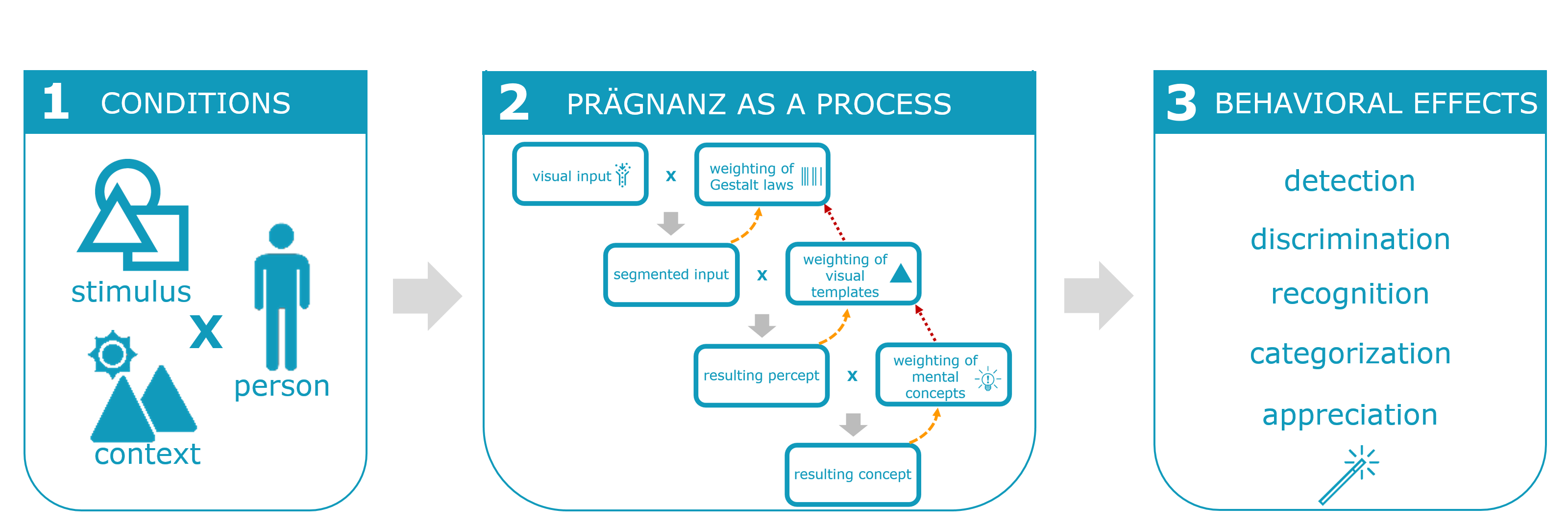B Appendix Chapter 2
B.1 Supplemental figures

Figure B.1: Illustration of Prägnanz as a predictive processing framework. The processing of visual input (i.e., the neural signals coming from the retina) depends on the organism’s sensitivity to and weighting of several grouping cues (i.e., the Gestalt laws). This combination of visual input with prior information about Gestalt laws is used to segment the input into discrete and unified objects. In further processing stages, the resulting posterior sensory evidence (i.e., the segmented input) is combined with relevant prior visual templates (or in even further stages also with prior mental concepts) to come to a final organization or percept (or concept in further stages). We assume that the visual templates from the second level can also influence the first processing level: Prior visual templates activated before the input arrives (e.g., in visual search tasks) can strengthen prior expectations for a certain segmentation or grouping of the input, hence also influencing the priors on lower levels. The same can be said for the activation of certain mental concepts, increasing prior expectations for certain visual templates (see red dotted arrows). We assume that the processes on the different levels run in parallel and are updated when more new incoming information is processed and possibly included in updated priors (see orange striped arrows).

Figure B.2: Illustration of current Prägnanz framework. The specific combination of internal and external conditions, related to stimulus, person, and context, codetermine what will be perceived and how prägnant that percept will be. The Prägnanz level of a percept can in its turn have several behavioral effects, including effects on perceptual categorization, discrimination, and aesthetic appreciation.